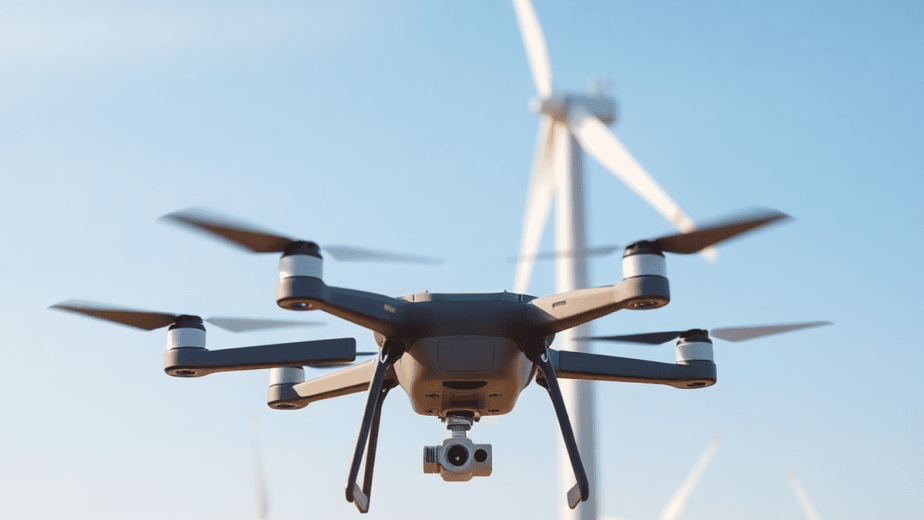Introduction
Game engines are changing the game for 3D visualization of digital twins. Originally designed for video games, these powerful tools are now being used to create lifelike and interactive models of real-world objects.
In this article, we’ll explore:
- How gaming technology is being used in industrial settings
- The potential impact on industries like:
- Architecture
- Engineering
- Construction
- Energy
- Urban Planning
With their ability to render stunning graphics and simulate complex scenarios, game engines are revolutionizing how businesses view and engage with their digital twins. This combination of technologies offers new opportunities for efficiency, creativity, and better decision-making across multiple sectors.
Understanding Digital Twins
Digital twin technology refers to the virtual representation of physical assets, processes, or systems. This digital counterpart allows for real-time monitoring and analysis, enabling organizations to simulate scenarios and optimize performance.
Key aspects include:
- Definition: A digital twin is a dynamic model that mirrors the characteristics of its physical counterpart. It evolves based on data received from sensors and other sources.
- Importance: Digital twins enhance asset management by providing insights into operational efficiency. They facilitate predictive maintenance, reduce downtime, and improve decision-making through accurate simulations.
Industries leveraging digital twins span various sectors:
- Architecture, Engineering, and Construction (AEC): In AEC, digital twins help visualize projects at every stage, allowing for better collaboration and reduced errors.
- Energy: Utilities utilize digital twins for real-time asset management, improving reliability in energy distribution and generation.
- Local Government: Municipalities implement digital twins for urban planning initiatives, enhancing infrastructure management through data-driven insights.
The integration of digital twin technology with advanced 3D visualization creates unparalleled opportunities for innovation across these industries.
The Role of Game Engines in 3D Visualization
Game engines are powerful tools for creating interactive and immersive experiences. Although they are primarily designed for video game development, their capabilities go beyond gaming. Here are some key functions of game engines:
- Real-time rendering: This feature allows for immediate visual representation of changes in 3D environments.
- Physics simulation: Accurate modeling of real-world physics enhances realism in visualizations.
- Interactivity: Users can manipulate elements within the environment, providing a hands-on experience.
Game Engines vs Traditional CAD Tools
When comparing traditional CAD tools with game engines like Unity and Unreal Engine for rendering 3D models, several distinctions emerge:
- Visualization quality: Game engines produce high-quality graphics through advanced rendering techniques, such as dynamic lighting and shadows. Traditional CAD software often lacks this level of detail.
- User experience: Game engines emphasize user interactivity, enabling stakeholders to engage with the model actively rather than passively observing it.
Advantages of Choosing Game Engines
Choosing game engines offers numerous advantages for industries seeking high-quality graphics and simulations:
- Enhanced realism: The combination of detailed textures and sophisticated lighting effects leads to visually compelling representations of assets.
- Performance optimization: Game engines are built to handle complex calculations efficiently, ensuring smooth real-time interactions even with large datasets.
This shift toward utilizing game engines in sectors like architecture, engineering, and construction signifies a revolution in how digital twins are visualized and interacted with, laying the groundwork for innovative practices.
Enhanced Graphics and Rendering Capabilities
The integration of gaming technology has significantly raised the bar for visual standards in industries. High-quality graphics and visual fidelity are no longer limited to entertainment; they are becoming essential in sectors like architecture, engineering, and construction (AEC).
Game engines leverage advanced rendering techniques that allow for:
- Realistic Textures: High-resolution textures create a lifelike appearance, making 3D models more relatable and easier to understand.
- Dynamic Lighting: Game engines simulate natural lighting conditions, enhancing the perception of depth and realism within digital twin environments.
- Complex Shadowing: Advanced shadow algorithms contribute to a more immersive experience by mimicking real-world light behavior.
Utilizing these sophisticated graphics capabilities, game engines provide unparalleled rendering quality compared to traditional CAD tools. This improvement allows stakeholders to visualize projects effectively, facilitating better decision-making processes. The realism achieved through game technology empowers users to interact with their digital twins as if they were physical entities.
Incorporating these evolving visual standards into 3D visualization transforms how industries approach design, analysis, and simulation. Not only does this enhance understanding among diverse teams, but it also streamlines the communication of complex ideas.
Simulation of Real-World Physics in Game Engines
Game engines are changing the way decisions are made by using simulations of real-world physics. This is especially useful in fields like Architecture, Engineering, and Construction (AEC), as well as the energy industry, where these simulations help professionals create accurate models of complex interactions in their digital twins.
Impact on Decision-Making
- Simulating real-world conditions allows for better assessment of structural integrity, resource allocation, and operational efficiency.
- Users can visualize potential challenges in a controlled environment, leading to informed decisions that minimize risks and enhance productivity.
Incorporating AI for Predictive Modeling further enhances the capabilities of digital twin environments. This combination provides several advantages:
- Data-Driven Insights: AI algorithms analyze historical data to predict future scenarios, enabling organizations to anticipate maintenance needs and optimize operations.
- Enhanced Simulations: Predictive modeling aids in understanding how various factors—such as weather patterns or human behavior—impact project outcomes.
Using game engine technology not only improves the quality of visualizations but also changes how strategic planning is done in various industries. By combining advanced physics simulations with AI-driven predictive modeling, sectors can reach new heights of operational excellence.
Practical Applications of Game Engines for Digital Twins
Game engines are proving crucial in various sectors, especially when it comes to improving operational efficiency and enabling remote work solutions. Here are some notable industry applications:
1. Mining Sector
Game engines facilitate remote monitoring and management of mines. For example, companies use immersive 3D environments to visualize their assets and operations. This approach allows teams to conduct inspections and make informed decisions without being physically present at the site.
2. Oil & Gas Industry
In this sector, game technology enables real-time data visualization from offshore platforms. Operators can interact with detailed 3D models of rigs, pipelines, and surrounding environments. This capability enhances safety measures by simulating various scenarios, allowing teams to prepare for potential emergencies while working remotely.
3. Urban Planning
Interactive city models powered by game engines transform the way urban planners approach development projects. Stakeholders can explore virtual representations of cities, complete with live data overlays showing traffic patterns, environmental impacts, and infrastructure needs. This level of engagement fosters collaboration among different departments and communities.
The integration of gaming technology into these industries promotes not just visualization but also practical decision-making tools that improve project outcomes. Companies like Mira Spatial exemplify this trend by utilizing advanced analytics alongside game engines to enhance infrastructure management across sectors such as energy and local government. The synergy between gaming technology and real-world applications continues to evolve, paving the way for innovative solutions in asset management.
Collaboration Between Industries: Cross-Sector Innovation through Gaming Industry Partnerships
The combination of gaming technology and traditional industries is opening up new opportunities for cross-sector innovation. This partnership is especially noticeable in sectors like construction and energy.
Key Developments
- Innovative Solutions: Gaming technology developers are working with industry leaders to create customized solutions that improve operational efficiency.
- Real-Time Visualizations: Game engines offer dynamic visualizations that enable better decision-making, which is essential for project management in fields such as architecture and energy.
Benefits of Cross-Sector Partnerships
- Improved Efficiency: The use of gaming technology streamlines workflows, saving time on planning and execution.
- Cost Savings: Enhanced simulations lead to more accurate budget forecasting and resource allocation, ultimately reducing expenses.
- Enhanced Project Outcomes: Collaborative efforts result in better designs and infrastructure management strategies, producing higher quality outputs.
The ongoing collaborations between the gaming sector and industries like construction and energy highlight a significant shift towards innovative practices. The growth of these partnerships continues to reshape the field of 3D visualization for digital twins, resulting in remarkable progress.
Future Trends in Digital Twin Technology Fueled by Advancements in Game Engines and Emerging Technologies
Anticipated advancements in game engines promise to significantly enhance digital twin development. Key areas of focus include:
- AR/VR Integration: The combination of augmented reality (AR) and virtual reality (VR) with game engines will allow users to interact with digital twins in immersive environments. This capability enables real-time data visualization and decision-making, enhancing overall operational efficiency.
- Real-Time Data Processing: Improved processing power in game engines will facilitate the handling of vast amounts of data from IoT devices. This allows for more accurate and dynamic digital twins, reflecting real-time conditions.
- Artificial Intelligence: The incorporation of AI within game engine frameworks can lead to predictive modeling. By simulating various scenarios, industries can assess potential outcomes and streamline processes based on informed decisions.
The continued evolution of both technologies opens up future opportunities for businesses to experience interactive simulations. Engaging with digital twins through immersive experiences will revolutionize how industries manage assets, optimize operations, and strategize for the future.
Conclusion
The combination of game engines and digital twin technology is transforming industries, offering numerous advantages:
- Improved Visualization: The capability to produce high-quality graphics allows for more effective communication of intricate information.
- Authentic Simulations: Integrating physics and AI into digital twins results in better decision-making processes.
- Innovation Across Sectors: Collaborations between gaming technology developers and industries promote innovation, leading to increased efficiency and cost savings.
As sectors such as architecture, engineering, construction, energy, and urban planning adopt these advancements, the potential impact on operations becomes increasingly promising. The ongoing development of game engines enhances 3D visualization for digital twins, opening doors for more immersive experiences. With continuous technological advancements, companies can utilize these tools for improved asset management, operational efficiency, and strategic planning. The future holds many opportunities waiting to be discovered.


